Makemo and Tahanea - Trials, Tribulations, and Time out
|
.  |
Time period: July 8th – July 19th Things don't always go perfectly in paradise, but then you are reminded you are in paradise, so it's not so bad!
|
Cruising in the South Pacific has been an amazing experience so far; the weather is generally sunny and warm, the water comes in the most intoxicating shades of blue, the trees glow green in the sun and the people are friendly. Our boat has given us little trouble (except for maintenance that everyone has) so it was easy to get lulled into the easy island life of snorkeling and exploring new places without worrying too much about the boat. Inevitably though, since we are talking about a boat, we were overdue for a reality check; a reminder that we are living on top of billions of gallons of water that are only kept out by a few layers of fiberglass and some seals in the thru hulls…
But let me start where our last blog left off. After reluctantly leaving Raroia, we had an easy overnight sail to the atoll of Makemo, about 80 miles away. The wind was not blowing hard so we anchored in front of the main village of Pouheva. We spent a day exploring the small village, purchasing provisions from several of the surprisingly well stocked grocery stores, and watching the locals race their pirogues near the wharf. Then we hoisted anchor and sailed to the west end of the atoll and a more protected anchorage near a pass. We had a great couple days snorkeling around some large coral heads, and chatting with a French couple about our age who also had their boat anchored nearby. The French couple live and work on Makemo – one of them is a nurse and the other a mathematics teacher. It turns out they actually get paid more to work here than in France, so they have been living in French Polynesia the last several years. They have a small sailboat they travel around the islands with when they are on vacation. It was fascinating to hear about their experiences living here and they gave us some great tips on where to go in the Society Islands. They also told us about great snorkel spots in Makemo. Unfortunately though, we were already planning on leaving in the afternoon (July 12th) for our next atoll of Tahanea. We wanted to stay, but also felt we needed to keep moving since we don’t have much time. In hindsight, we probably should have stayed another day…
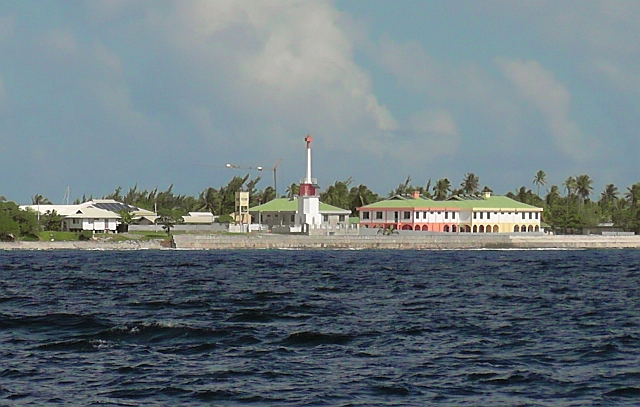
Oceanside view of Pouheva - lighthouse and new school.
Pirogue racing in front of the village of Pouheva.
A beautiful sunset near an uninhabited motu in Makemo.
A crown-of-thorns-starfish munching on coral. Overpopulation of these guys is decimating several reefs in the South Pacific. We only saw a handful in Makemo, although this was also the only atoll of the three we visited where we observed them.
The tricky thing about the Tuomotus is timing your entry and exit through the passes in the atoll, and making sure you have favorable sun so you can see coral heads in the lagoon (see the blog on Raroia for a picture of the disappearing coral head). We left Makemo at slack tide and had an overnight sail to Tahanea, sailing slowly on purpose because it is only 50 miles away. We tried to enter the Tahanea pass about 6:30am, about an hour and a half after slack tide. This way there should be some sun to see by, but hopefully the outgoing current would not be too strong yet. Well, sometimes it is easy to hope for too much and take your good luck for granted. Here is what happened as we approached the Tahanea pass in Chris’s words:
The standing waves on the west side of the pass were impressive. It looked like white water rapids in a raging river and we were less than 100 ft away. We stayed as far east (away from the waves) as we could without getting too close to the reef, however we still had trouble fighting the outgoing current flowing through the large pass. Green Panther’s engine was pushed close to the max but our boat speed was still less than 1.0 kt. All of a sudden we heard a loud rumbling noise from below and Alena shouted “There is water coming in! Abort!” and pointed to water gushing from the engine compartment onto our cabin floor. I immediately shut down the engine and turned the boat around, the outgoing current spitting Green Panther back out into the ocean at over 7 kts. A quick check of the engine compartment revealed the water was pouring in around the engine shaft; the entire shaft had been pushed inward by more than 3 inches, rendering the shaft seal useless! Fortunately we had “rescue tape” onboard. That’s a tacky tape which adheres to itself under pressure and is used, well, for emergencies. In our case the tape did a good job and reduced the water flow to a trickle, letting us breathe a sigh of relief that we weren‘t going to sink. Happy to still be afloat we went through our options. We could try to sail for Tahiti, but there was almost no wind forecast for the next 2 days so we would just bob around in the swell being miserable and not making much headway. The alternative was to wait for the next slack tide, sail through the pass, and spend a few days in the lagoon assessing our situation. We decided on the latter and with tide reports from other cruisers inside the lagoon and close to the pass, we approached the pass for the second time that day. As predicted, the (now) incoming current sucked us into the lagoon and we had just enough wind to keep the boat under control and to make a safe entry.
Warning: Sailing into a pass with no engine can be hazardous to your health. Do not try this if you do not have to!
We were a bit too panicked to take pics of our water leak, however here is a pic of a feeding frenzy we observed while tacking back and forth outside of the pass waiting for the next slack tide. Wish we could have jumped in to see the fish below the surface!
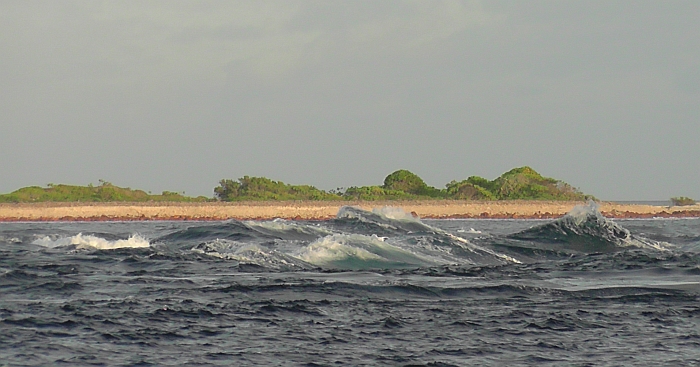
Standing waves in the pass into Tahanea
Once in the lagoon, we tacked to a safe anchorage less than a mile away and Chris started studying the diesel engine manuals. The anchorage was great; it was close to another pass considered too narrow for navigation, but great for snorkeling at slack tide. The next day we took a break from studying our engine problem and enjoyed the best snorkeling of our entire trip thus far. We snorkeled in the lagoon side of the pass, which was carpeted with corals and a highway for large fish (including our first humphead wrasse we've seen in the wild!) and juvenile blacktip reef sharks. It was beautiful.
The view where we jumped in for our snorkel. I just can't get enough of the clear aquamarine water!
An obliging goatfish posing for me.
A moorish idol.
Blue-green chromis hanging out among the coral.
Our first humphead wrasse, outside of an aquarium.
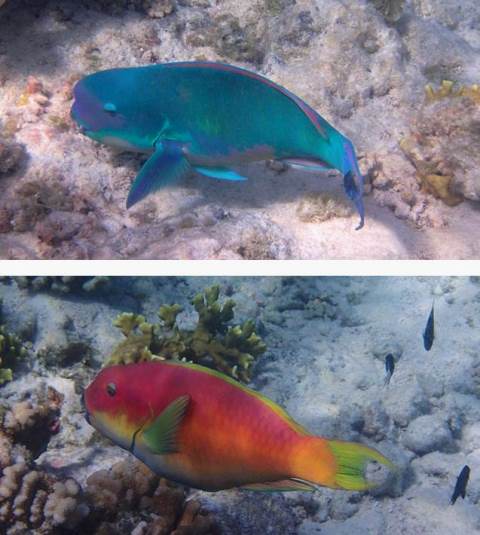
The ever ubiquitous parrotfish. Parrotfish are hermaphrodites and start out life in the initial phase (bottom pic) where they can be male or female. Later in life, they enter the terminal phase (top pic), where they are exclusively males. The inital phase parrotfish we observed was likely a female since it traveled with the male, terminal phase parrotfish.
A trumpetfish and peacock grouper buddy swimming. I saw this pair when we started our snorkel and an hour later when we were returning from the pass, they were still together!
A blacktip reef shark. These guys are everywhere here! I don't think there was a single snorkel we did where we did not at least see little juvenile blacktips. Not to worry though, these sharks are not aggressive unless you really harass them or tease them with bloody tuna.
Finishing our snorkel and getting ready to head back to the boat to read up more about diesel engines and propeller shafts.
The next morning the wind picked up again and our anchorage was getting a lot of wave chop. We decided to move to a more protected anchorage 9 miles away. We figured it would be an easy 3 hour sail and we could spend the afternoon relaxing and snorkeling to celebrate my birthday. Unfortunately, the tricky boat gods weren’t finished with us yet. As we were bringing up the anchor chain, it refused to budge after just a few feet; the chain had become wrapped around a large coral head when the wind shifted! We tried moving the boat (under sail remember) to different sides, but nothing worked. Finally I jumped in and snorkeled over the chain to determine the direction it was wound. We could not move the boat far enough forward under sail to ease the tension on the chain, so Chris put the engine on our dinghy and after several tries, managed to pull our boat forward with the dinghy. Ever so slowly we could hoist the anchor and 1.5 hours later we were finally on our way! Okay, we were beginning to miss our engine now. We could have driven around the coral head in a matter of minutes to unwind the chain if our engine had been working.
Tacking to the east end of the lagoon with our dinghy in tow, the wind was on our nose and we were fighting the wave chop. After about an hour we were only 1 mile closer to the east anchorage, although we had traveled about 3 miles. We were feeling a bit dejected about our slow progress when Chris glanced back at our dinghy and shouted an expletive (which is a rare occurrence – though perhaps not in the last couple days J). I followed his gaze and noticed our tow rope dragging behind the boat, but with no dinghy! Our line was not strong enough for the wave chop and had broken. Luckily we could see our dinghy about a half mile away, so we quickly turned the boat around and sailed to the dinghy. We couldn’t get close enough to attach a line with the boat hook, so I jumped in (I still had my swimsuit on from the earlier snorkel over the anchor chain), swam to the dinghy and climbed in. Meanwhile Chris maneuvered the boat in a “man overboard” figure eight and sailed back to me and the dinghy so he could toss me a new line. It took a couple figure eights to get close enough so I could catch the line, but we finally managed to secure the dinghy with a new (and stronger) tow rope. Hoping this was the end of our excitement and relieved we still had our dinghy, we settled in once again to the slow upwind sail to the anchorage. However, there was still one more bit of excitement in store for us. Two hours later, Chris noticed the dinghy was sitting pretty low in the water. Pulling the dinghy a bit closer to the boat, we saw to our horror that the dinghy was filled to the brim with water! The dinghy has a raised hole in the middle for a centerboard to fit in if we want to sail the dinghy, however with the wind chop, the water slowly leaked in through the hole. Chris brought the dinghy alongside the boat and gingerly stepped into it, afraid it would sink with his weight. Luckily, when Chris built the dinghy, he filled the space under the seats with copious amounts of spray foam and we discovered our dinghy is virtually unsinkable! He managed to pump the water out of the dinghy with our manual bilge pump and we were back on our way. Two hour later, about an hour before sunset, we finally arrived at the east anchorage and could anchor in sand with no coral nearby. Whew! We fell exhausted into our bed a couple hours later.
Happily, our next few days at Tahanea had no mishaps. Our new anchorage was gorgeous - we were anchored in 25 ft of clear aquamarine water that sparkled in the sun like a jewel with a lovely palm covered motu in front of us. White terns, black noddies and frigate birds hunted all around, gracefully swooping towards the water and dipping their necks for fish. We split our time between working on the boat and enjoying our surroundings since this would be the last atoll we visit in the Tuomotus. Interestingly, the best reefs in the anchorage were in shallow water (2-4 ft) next to shore; there were large flat coral heads full of fish, giant clams, tube worms, and many other reef creatures. We could just sit on the beach and peer down into our own private aquarium! And speaking of private aquariums, ever since Raroia we also noticed our boat has attracted its own contingent of remoras – we typically have between two to five attached to the bottom of our boat waiting for any tidbits (we usually throw food waste overboard – which doesn’t last long!). Experiencing amazing places like this really make us realize how fortunate we are to be out here and that even with all the trouble a boat can be at times, the rewards of cruising more than make up for the headaches!
Our view from the boat. Makes you forget pretty quick about the trouble it was to get here...
The shallow corals near our anchorage in Tahanea.
One of the beautiful giant clams in the shallow reef.
More blue-green chromis hanging out in the coral.
A butterfly fish getting a quick cleaning by a cleaner wrasse.
Christmas tree tube worms are fairly abudant too.
The intertidal zone wasn't bad either - we spied several redspotted blennies munching alage off the rocks. Pretty cute!
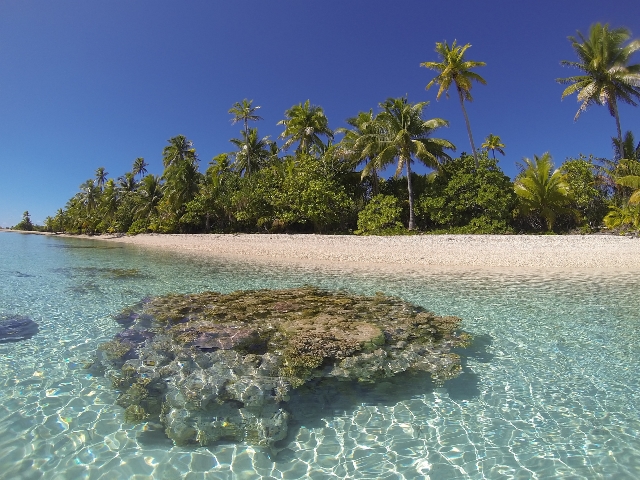
Our own private beach and aquarium! Isn't it crazy how shallow the corals can grow?
Had to take the stereotypical atoll shot.
Christian opening a coconut. The nicest thing about our private motu on Tahanea was there were several palms with coconuts low enough for us to just reach up and grab (at least for Christian)!
Success!
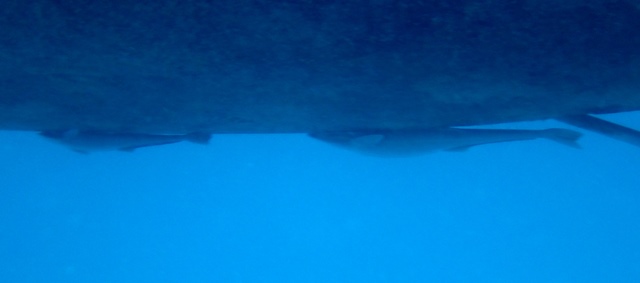
Sorry for the poor picture quality, but here you can see two remoras attached to the bottom of our boat. I think this should be added to the fish books - remoras are not exclusive to attaching on fish and marine mammals!
Christian trying to catch us some supper. Luckily nothing bit - many reef fish in the Tuomotus have ciguatera so I was too sketched out by that to fish here.
Another beautiful sunset.
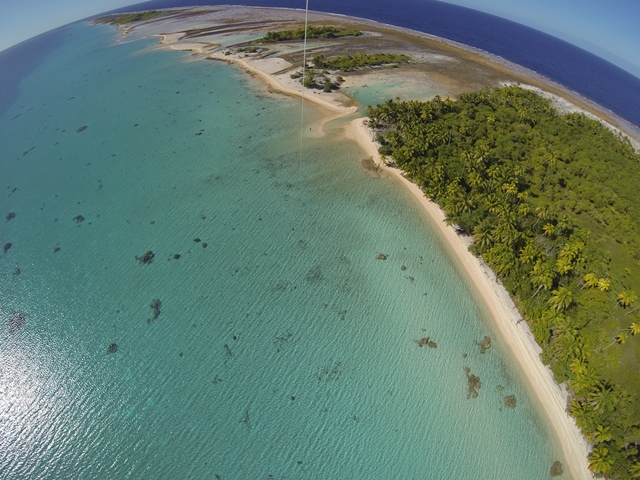
Chris also took out his kite one day and got some awesome aerial views of the motus we were anchored in front of.
Meanwhile, our friends on the sailboat Calypso (who were still in Nuku Hiva), scoured the internet for information on our particular propeller shaft and emailed us (SSB email) new things to try each day. Have I mentioned how amazing the cruising community can be? The shaft was not bent and it appeared our seal was not broken either; the issue was the shaft was too far forward for the seal to work. There was a chance if we could hammer the shaft back into place, it might re-seal. Chris managed to hammer some of the shaft back into place with a rubber mallet; however the final 2 inches wouldn’t budge. We would have to wait until we reached Papeete (Tahiti) to visit the boatyard for better tools to try and fix it. A couple days later there was a good weather window of 12 - 15 kt east winds, and we decided to take advantage of it to sail the 300 nm to Tahiti. We hoisted anchor and sailed out of the pass through more standing waves, fighting a westward current which pushed us close to the reef. It was a bit hairy but we made it out unscathed. And three days later after a relatively smooth, uneventful sail we arrived in Tahiti!
Christian trying to hammer our prop shaft back into place.

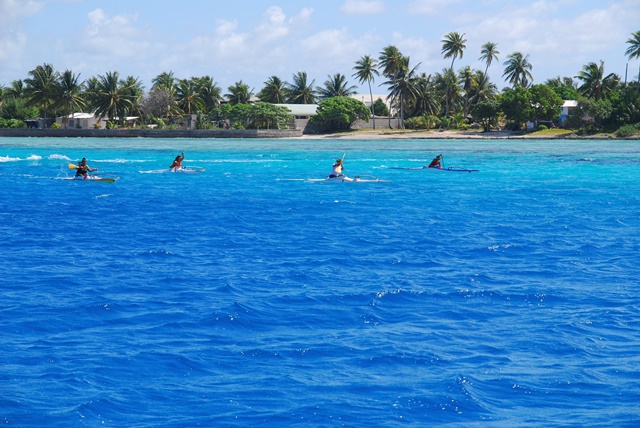
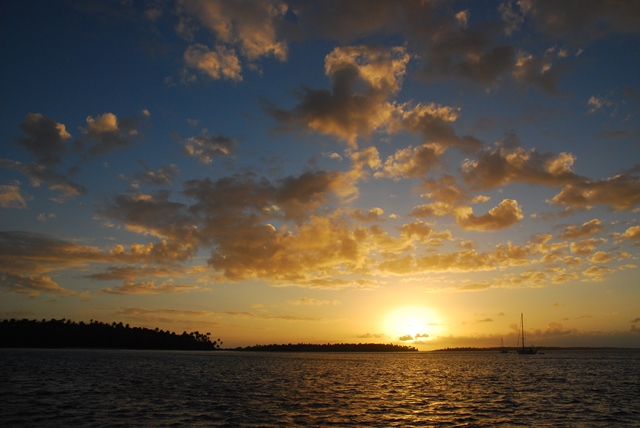
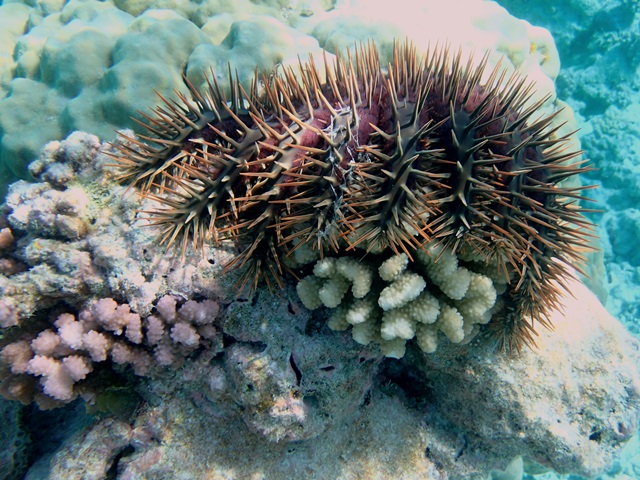
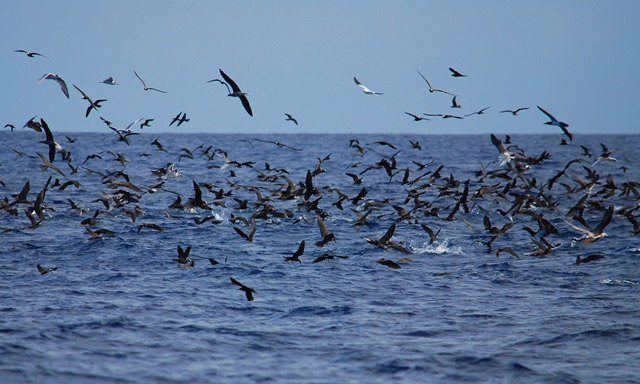
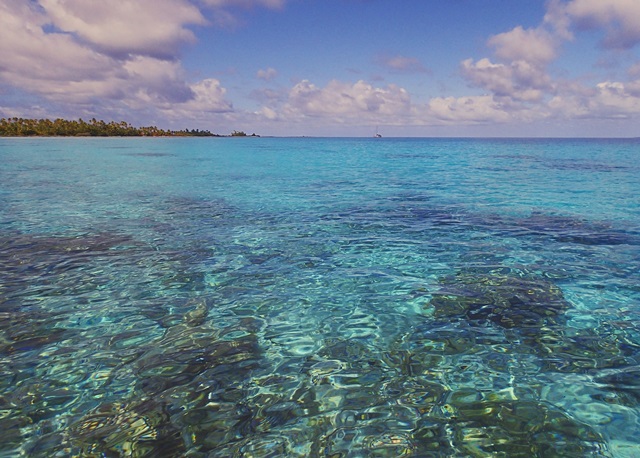
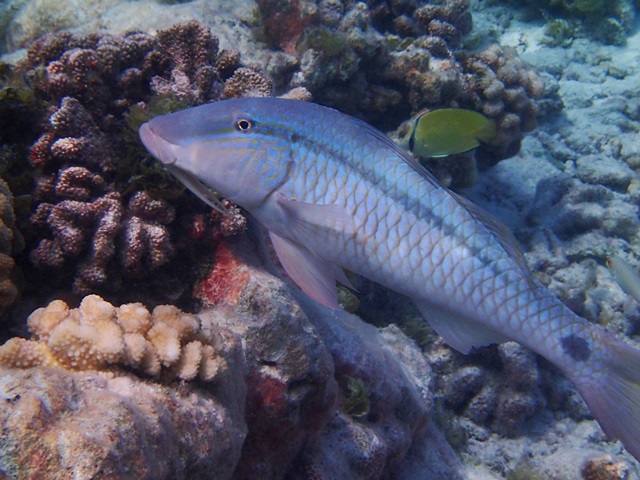
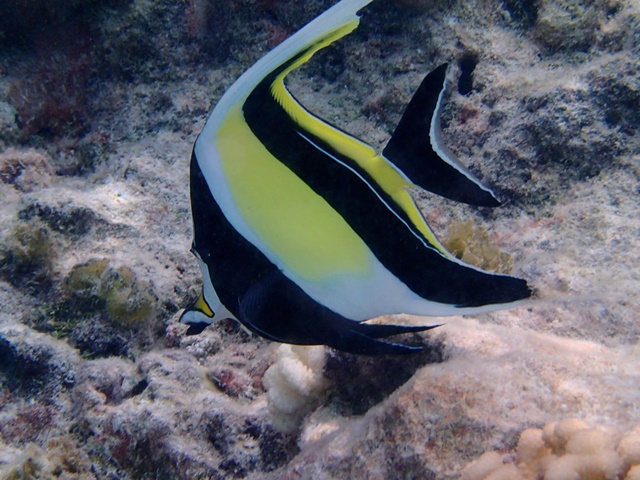
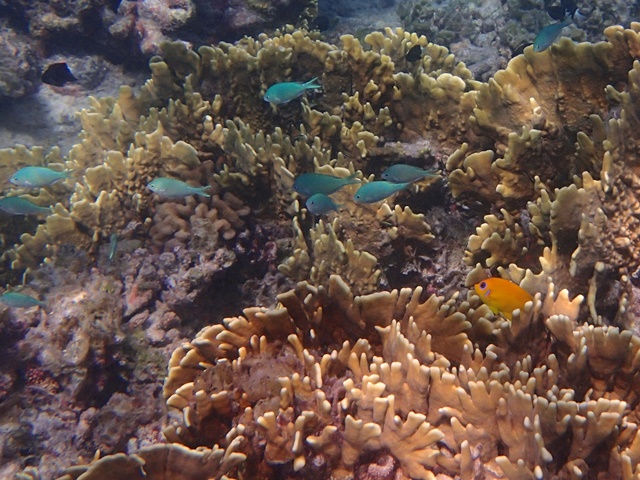
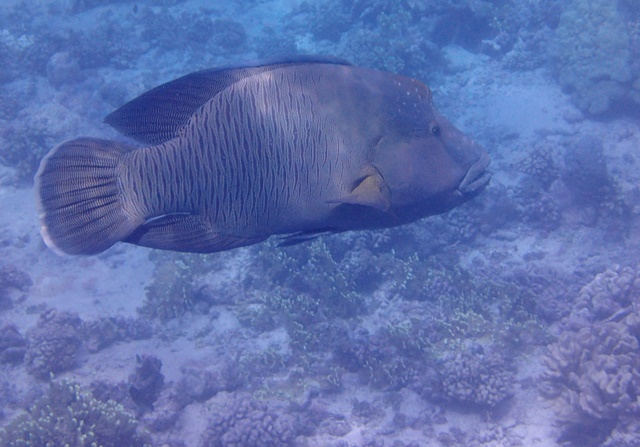

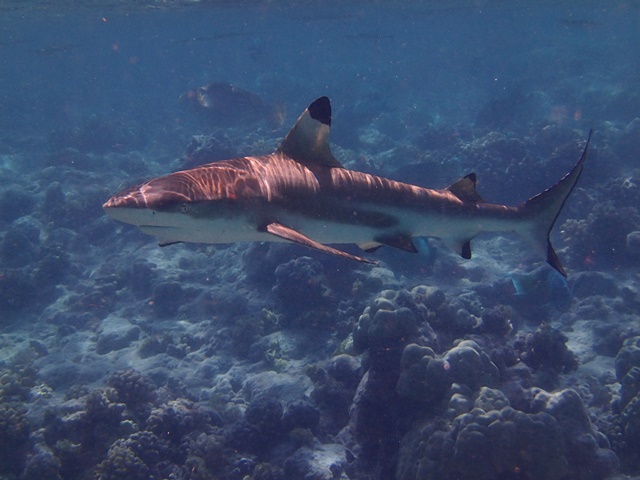
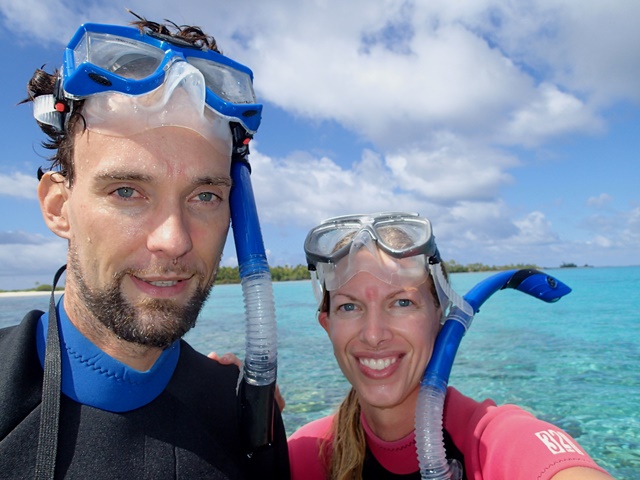
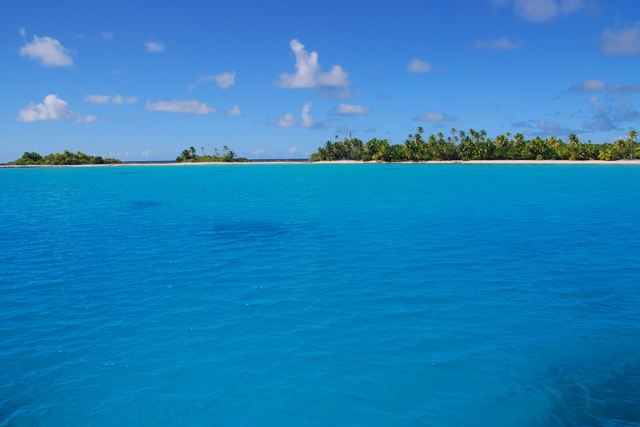

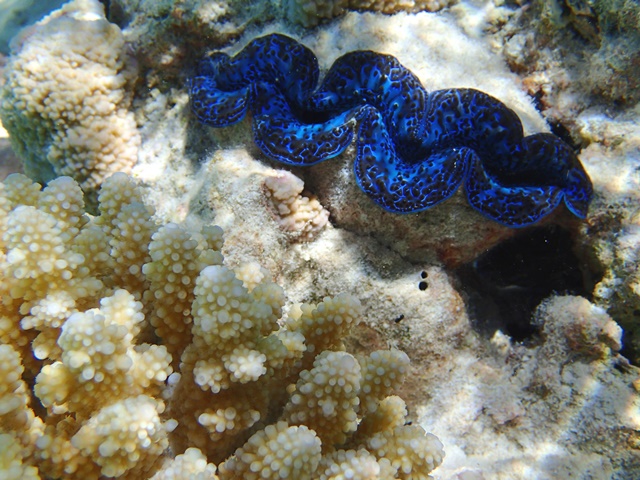
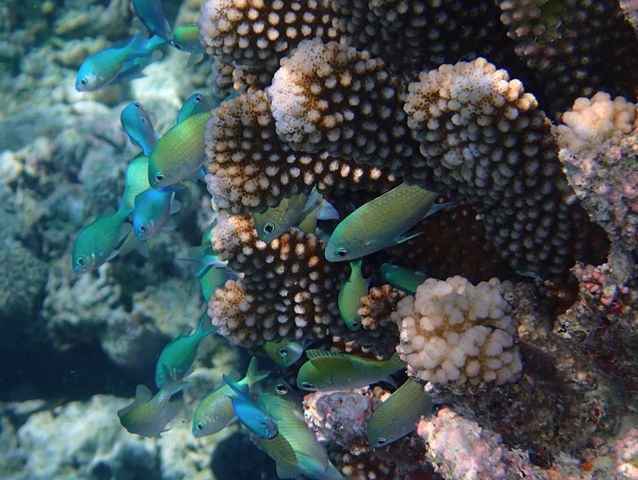

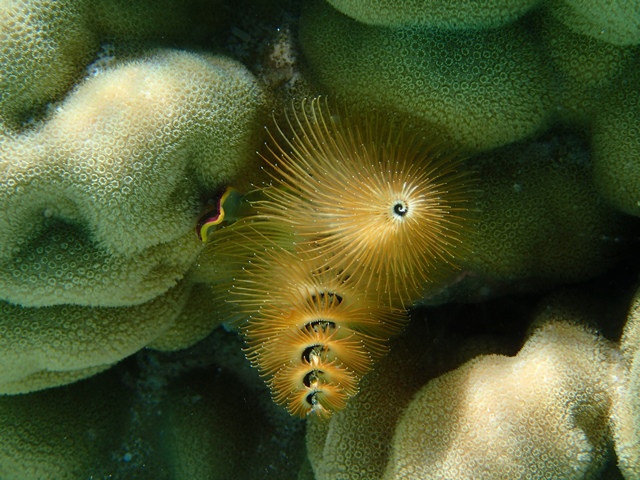
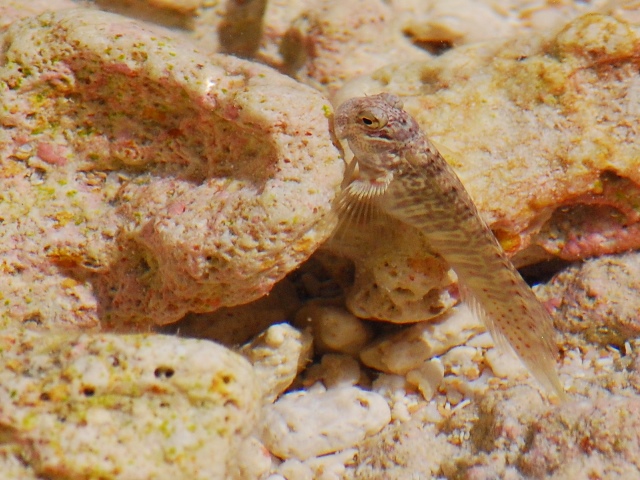
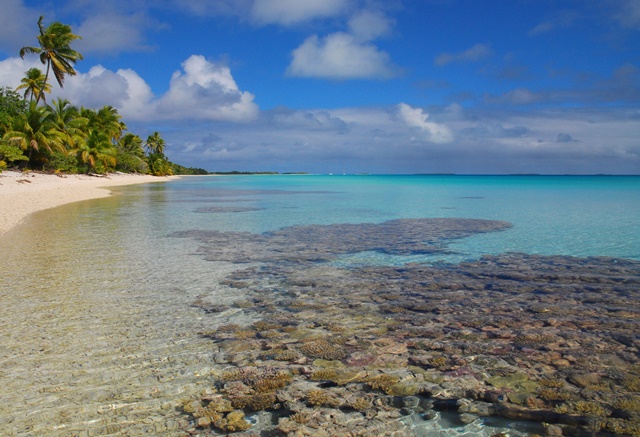
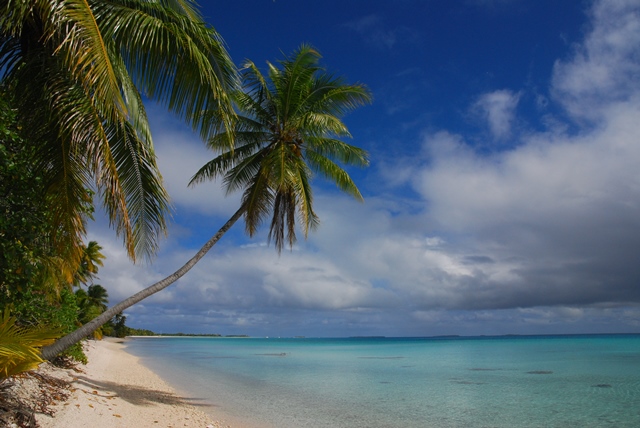
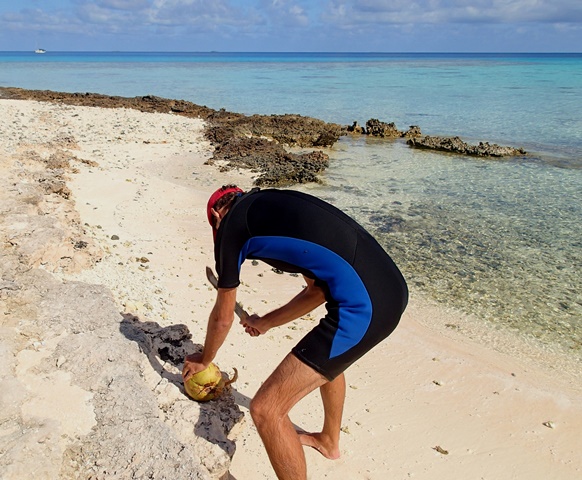
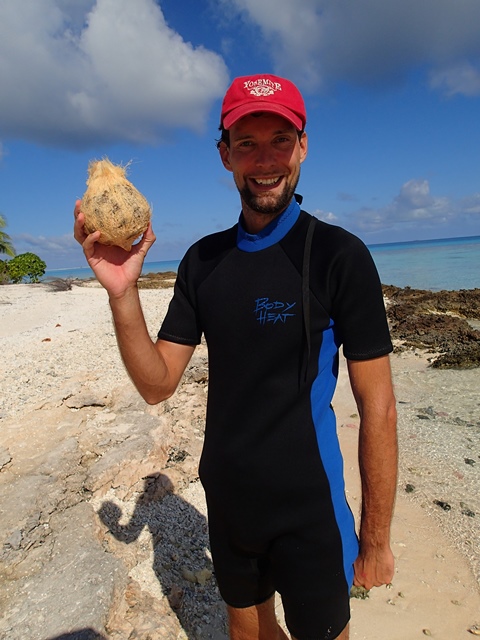
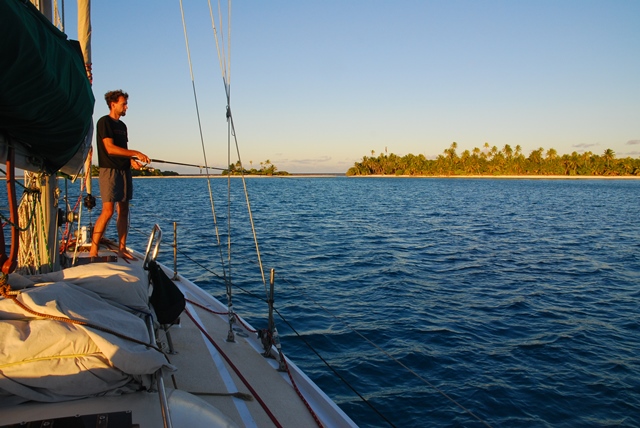
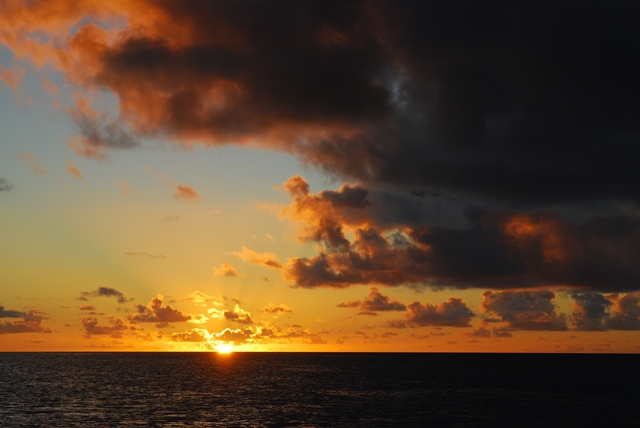
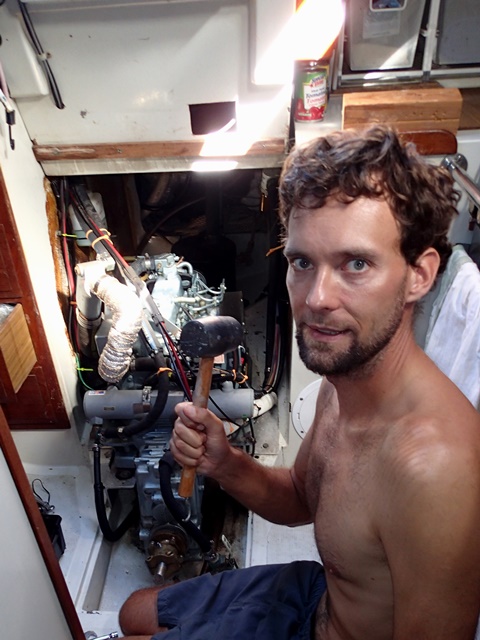
Comments
Love the photos. Good luck going forward,
We have friends in New Zealand if you need help. Let us know.
Good luck.
the photos are really gorgeous.